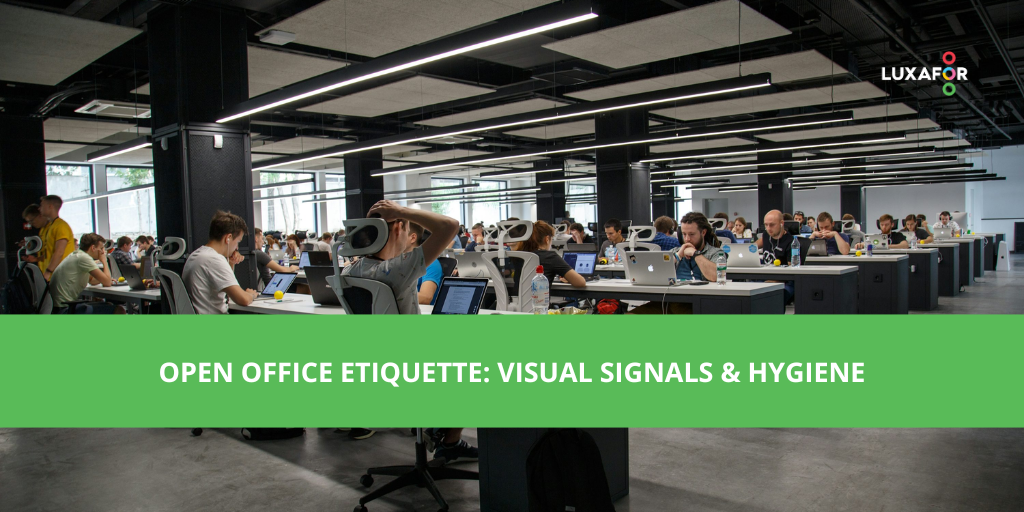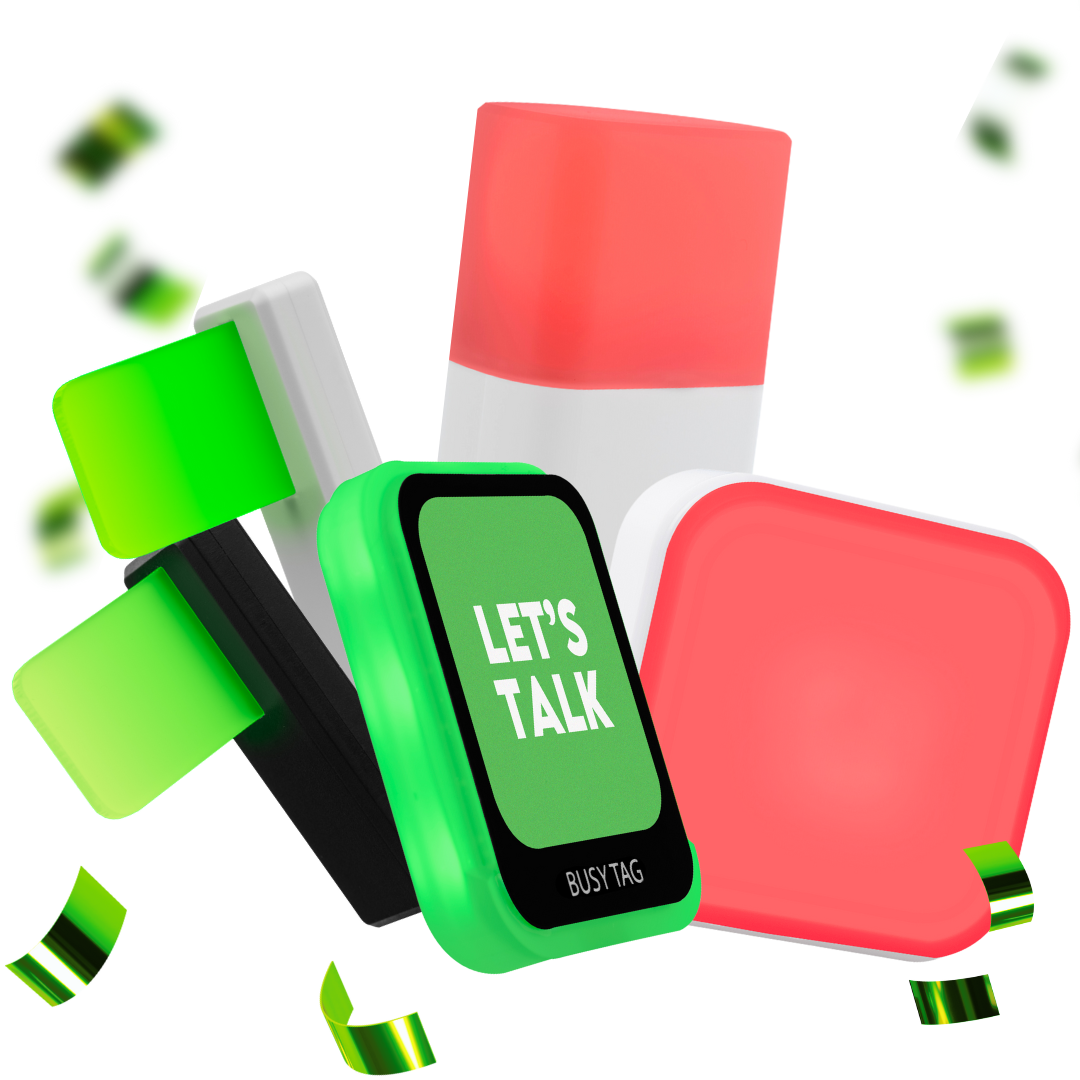Open Office Etiquette: Visual Signals & Hygiene
Image from Pexels
Open offices can be great for energy and terrible for focus. You don’t need a five-page policy to fix that. A few shared cues—when to engage, when to give space, and how to keep shared gear clean—go a long way. This is a practical playbook for teams that want fewer interruptions and less “Did I just cough on that?” anxiety, without turning the workplace into a rulebook.
Why etiquette matters in an open office
Most friction comes from ambiguity. You tap a shoulder because you assume it’s a good time; the other person was finally in flow. You book a room for three and the previous group leaves late and messy. Etiquette isn’t about being precious—it’s about reducing misfires. When colleagues can see at a glance whether you’re available and know the basic hygiene and air habits around shared spaces, everyone loses less time and feels more comfortable sticking around the office.
Visual signals that actually change behavior
People respond to clear, ambient signals faster than they do to chat statuses buried in a sidebar. A small, visible indicator at your desk says “heads down” more reliably than a Slack emoji. Even a basic door tag or desk light lets teammates approach with confidence or hold that thought for later. If your team wants to formalize this in a lightweight way, start with a simple color code: green means “interrupts welcome,” red means “please drop it in chat,” and a brief amber window after meetings gives folks time to wrap notes before new conversations pile on.
Hardware helps here because it’s visible from a distance. Teams often pair a desk light with short, written norms like “If someone’s status is red, send a message; they’ll loop back when they come up for air.” That small bit of clarity stops the constant “Got a sec?” drive-bys and reduces the need to wear headphones all day. For a deep dive on why physical signals beat chat statuses, there’s a useful walkthrough on visual focus tools that compares real-world setups and behavior change across remote and hybrid teams on Luxafor’s blog, and if you’re ready to kit out desks, the Switch Pro line shows how presence can be mirrored across hot desks without extra clicks.
Busy Tag: Stay focused and avoid distractions
Hygiene without the drama
Hygiene etiquette needs to be simple enough that people actually do it. Think small, repeatable rituals: wipe the table after meetings, leave keyboards and remotes clean, and don’t crowd someone who’s clearly under the weather. The goal isn’t to police behavior; it’s to lower the overall background risk in shared spaces. If you need a plain-English backbone for the “why” of these norms, OSHA’s overview of workplace pathogen exposure lays out the common vectors that matter in offices and mixed spaces. You don’t need to copy every control in a lab setting—just borrow the idea that predictable, low-effort steps beat vague reminders to “be careful.”
Ventilation is part of etiquette, too. Cracking a window in a meeting room or giving the HVAC a minute to cycle between back-to-backs isn’t overkill; it’s basic courtesy. The U.S. CDC’s guidance on ventilation explains how small improvements reduce transmission risk and stuffiness without fancy equipment, and the EPA’s indoor air quality pages make the same point in a facility-agnostic way. Those resources are written for building managers, but the ideas translate well to everyday habits.
Meeting rooms: status, turnover, and air
Meeting rooms are where etiquette either shines or collapses. A visible status light at the door stops the awkward handle-rattling and gives latecomers a quick read on whether the room’s free. If you run back-to-backs, add a one-minute “turnover” buffer so the next group isn’t stepping into stale air and a table full of coffee rings. Wipe, reset chairs, hit the light to green, then go. A small routine like that tells the next team “we considered you,” which tends to come back around.
If your space allows, pair a simple presence light with a room indicator device so people don’t hover at the glass. Luxafor’s door and room indicators are built for that kind of “is this free?” glance, and the basic Switch option covers rooms that don’t need calendar integrations. When you combine visible status with a short etiquette line—“Leave the room ready for the next group”—you’ll be surprised how quickly the culture shifts.
Hot-desking and shared gear
Hot desks only work when the handoff is painless. A quick wipe, cables tucked, and the presence light reset to neutral turns a workstation back into community space. Shared gear—mics, remotes, adapters—benefits from the same pattern. No lectures required, just consistent cues. If your office has long rows, place indicators where they can be seen from the aisle, not hidden behind monitors. People follow what they can see.
Noise matters here, too. One person’s quick sync can torpedo ten other people’s focus if it happens in the wrong place. Visual signals help route those conversations to huddle rooms before they balloon. Luxafor’s comparison of open-office distraction drivers makes a strong, pragmatic case for separating “talking work” from “thinking work” and shows how simple norms and signals cut the worst of the cross-talk.
Airflow etiquette without becoming facilities
You don’t need to run the building to nudge airflow in the right direction. Prop doors for a minute after large meetings. This allows the system time to clear the phone booth between calls. Avoid eating full meals at open desks where odors can linger. If your team uses portable air purifiers or monitors, treat them as shared equipment. Check their status, don’t block intakes, and leave the numbers visible so others can see the room improving. The CDC’s plain advice on building ventilation and the EPA’s summaries of indoor air quality basics both support the idea that small airflow habits stack up. You can fold that into etiquette as gently as “open the window if you’re the last one out.”
Rolling out etiquette: keep it short and visible
A workable policy fits on one page and lives where people will actually see it. Lead with availability signals and meeting room turnover. Add two sentences on light-touch hygiene and airflow. End with a line about using chat for anything non-urgent and booking rooms for anything that will take more than a couple of minutes. Train it by modeling it. Leaders use the lights, wipe the table, and pause before interrupting. When the behaviors are visible and consistent, reminders feel less like policing and more like a shared pact.
Measuring whether it’s working
You’ll know etiquette is landing when people interrupt less and meetings start on time. If you want a little more rigor, track two quick proxies for a month: how often people override a red/“do not disturb” desk status, and how often rooms start late because the previous meeting ran over. A downward trend on both means your norms are taking hold. If you crave a deeper analysis later, usage data from status devices and simple calendar audits can show where to tweak norms without resorting to heavy-handed rules.
Remote and hybrid nuances
Etiquette doesn’t stop at the office door. When half your team is remote, the same color cues should apply in your collaboration tools and—ideally—mirror on desk indicators for those onsite. If a teammate’s light is red, drop your thought in chat and move on. For folks at home, a small “do not disturb” indicator on a study door is more neighbor-friendly than taping up paper notes, and it keeps family traffic from derailing calls. The trick is to normalize these habits so no one feels like they’re asking for special treatment when they guard their focus for an hour.
The lightest possible hygiene checklist
If someone asked for a one-sentence version, it would be this: clean in, clean out, and give the room a breath. That covers keyboards, remotes, tables, and air. Tie that to visible status at desks, and you’ve solved most of what makes open offices feel chaotic. No one wants a lecture about germs; they just want a workplace that feels considered.
Putting it all together
Adopt a visible status system for desks and rooms, agree on a couple of micro-rituals for cleanliness and airflow, and keep the policy short enough that people remember it. When you need a quick rationale, public guidance on workplace pathogen exposure gives you the safety context without turning a desk into a clinic. Basic ventilation advice from public health agencies supports the airflow piece without getting into engineering. And for teams that like practical examples, Luxafor’s walkthroughs of visual signals and open-office pitfalls show how small changes make offices feel calmer and more respectful.
Conclusion: open office etiquette, visual signals & hygiene
Open office etiquette isn’t complicated. Clear visual signals reduce interruptions, light-touch hygiene keeps shared gear pleasant, and small airflow habits make rooms feel better faster. Keep it visible, keep it short, and the culture will do most of the work.















